Director Benny Safdie's 'The Smashing Machine' MMA fighting biopic gets a unique 16mm styling by DP Maceo Bishop
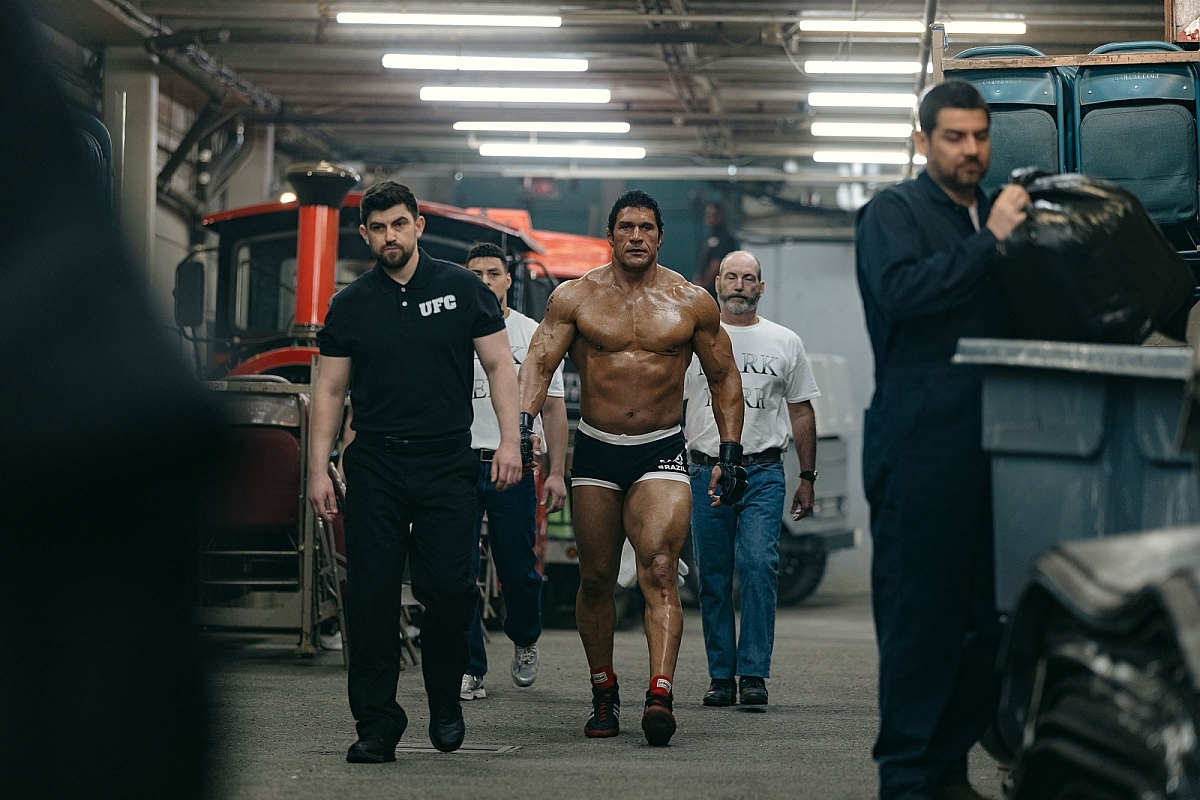
Dwayne Johnson as mixed martial arts and UFC fighter Mark Kerr in director Benny Safdie's THE SMASHING MACHINE. Photo courtesy of Eric Zachanowich and A24.
For The Smashing Machine, the sports biopic about legendary mixed martial arts and UFC fighter Mark Kerr (Dwayne Johnson), director Benny Safdie (Uncut Gems) and cinematographer Maceo Bishop (The Curse) created their own visual rules for the fights, based on documentary styling.
The film is adapted from the HBO documentary The Smashing Machine: The Life and Times of Extreme Fighter Mark Kerr (2002), which dazzled Safdie. "I saw the documentary, and it was just something about him that I found very interesting and really unique and special," the director says. "This guy [who] was so large and so vicious in the ring, could be so soft-spoken and really intellectual about his feelings and what he was going through."
And then on top of that, Kerr struggled with addiction and his tumultuous relationship with partner Dawn Staples (Emily Blunt). "He was the ultimate person to use as an example for everybody because he's co-dependent and very toxic, and you can only imagine what other people are dealing with and how they can relate," Safdie adds.
There was never any doubt about shooting KODAK 16mm with a lot of handheld movement to capture the intensity of period (1997-2000) and the doc-like texture. (The opening was shot with vintage 2000 broadcast cameras and the epilogue featuring Kerr was shot in IMAX). Bishop used Arri 416 cameras and primarily used zooms, whether handheld or studio mode. These included such Super 16 as Zeiss 11-110mm, Angeniuex HR 7-81mm, Cooke 10-30mm, and Canon 8-64mm.

Dwayne Johnson as mixed martial arts and UFC fighter Mark Kerr in director Benny Safdie's THE SMASHING MACHINE. Photo courtesy of Eric Zachanowich and A24.
Meanwhile, the stocks were KODAK VISION3 500T 7219, VISION3 250D 7207, and VISION3 50D 7203.
"There was something about 16mm that evokes a certain feeling of realism," continues Safdie. "Maybe it's because there's 40 years of people capturing documentary on that, and it's built into people's heads. It's a very difficult medium to work on because you can't underexpose, you can't overexpose, you have to hit exposure for the negative to be the perfect amount."
"What I think film offers, 16mm film, in particular, is a tonality, an analog warmth and resonance that I think is uniquely achieved through the chemical process. There's a heart and soul inherent in it," adds Bishop, who served as camera operator and second unit director of photography on Uncut Gems with his mentor, cinematographer Darius Khondji. "Additionally, you have the form factor 16mm offers so you can move the camera in ways you can't with a bigger camera; you can also do longer takes, and I think there's some magic you get access to when you combine the two."
What was important for Safdie was to go back in time and recapture Kerr's fights with a 16mmcamera. "I thought we can light it in a way that's more grand," he adds. "We can put it in locations that are bigger. You can see scope. You can play with [Nala Sinephro's experimental] score. But there's a point of view that you need to have when watching the movie in order to get to these places. If I want to put you in this guy's head, you need to believe that you're actually there. So that meant our camera placement had to be very rooted in reality."
Safdie and Bishop decided that the most realistic vantage point for the fights, though, would be directly outside the ring. "Sometimes you'll see a basketball movie and suddenly cameras are on the basketball court, moving around with the basketball players," Bishop says. "That puts audiences in this very unusual place. So we imagined ourselves as this documentary crew who had access to our fighter in the 'real' world, but only partial access during his professional fights, [because] there are certain places we just couldn't get to because we wouldn't be allowed. This help ground us in a reality we felt was more authentic."
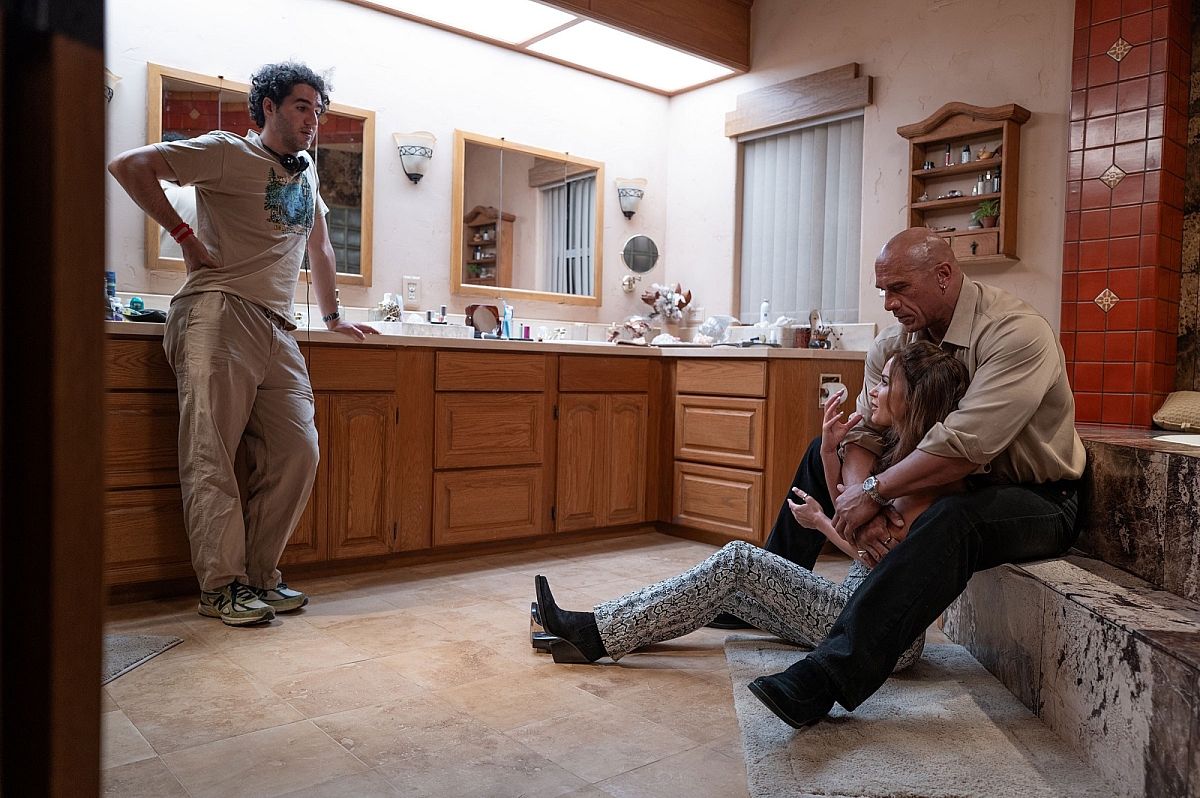
(L-R) Director Benny Safdie, Emily Blunt as Dawn, and Dwayne Johnson as mixed martial arts and UFC fighter Mark Kerr in THE SMASHING MACHINE. Photo courtesy of Eric Zachanowich and A24.
"I remember we had multiple angles of a scene, and I would be like, 'Oh, great, we're going to get this shot,'" Safdie adds. "And then I would look over, and I'm like, 'Oh, wait, the camera technically would be looking at me.' So we can't put the camera here, we could put it over here, where it's just out of the other one's frame. So I was always aware of where the cameras were."
Bishop and Safdie worked closely with stunt coordinator Greg Rementer methodically breaking each fight into sections (the grandest were the Pride Championships in Japan), changing position and angles around the ring. For this two-camera shoot, he'd place them on different sides of the ring and Safdie would choose between them. But they limited themselves to those two sides of the ring, like a ringside seat. Sometimes, though, they'd get a very high angle shot with a third camera to enhance the dramatic POV.
Bishop also collaborated closely with production designer James Chinlund. The original plan was to shoot on a volume and replace with a CG background. That's because they knew they couldn't fill an arena with 60,000 people. However, the Vancouver location proved fortuitous when Chinlund found an arena that they could use. It wasn't as large as the original arenas, but it was more authentic. "We could really feel the depth of the space, it was fantastic," Bishop says.
A test schedule, meanwhile, proved valuable in New York and New Jersey. This provided exteriors with lots of sun, a boxing gym so they could see someone in motion, illustrating similar fight moves to Kerr's iconic "ground and pound" style.
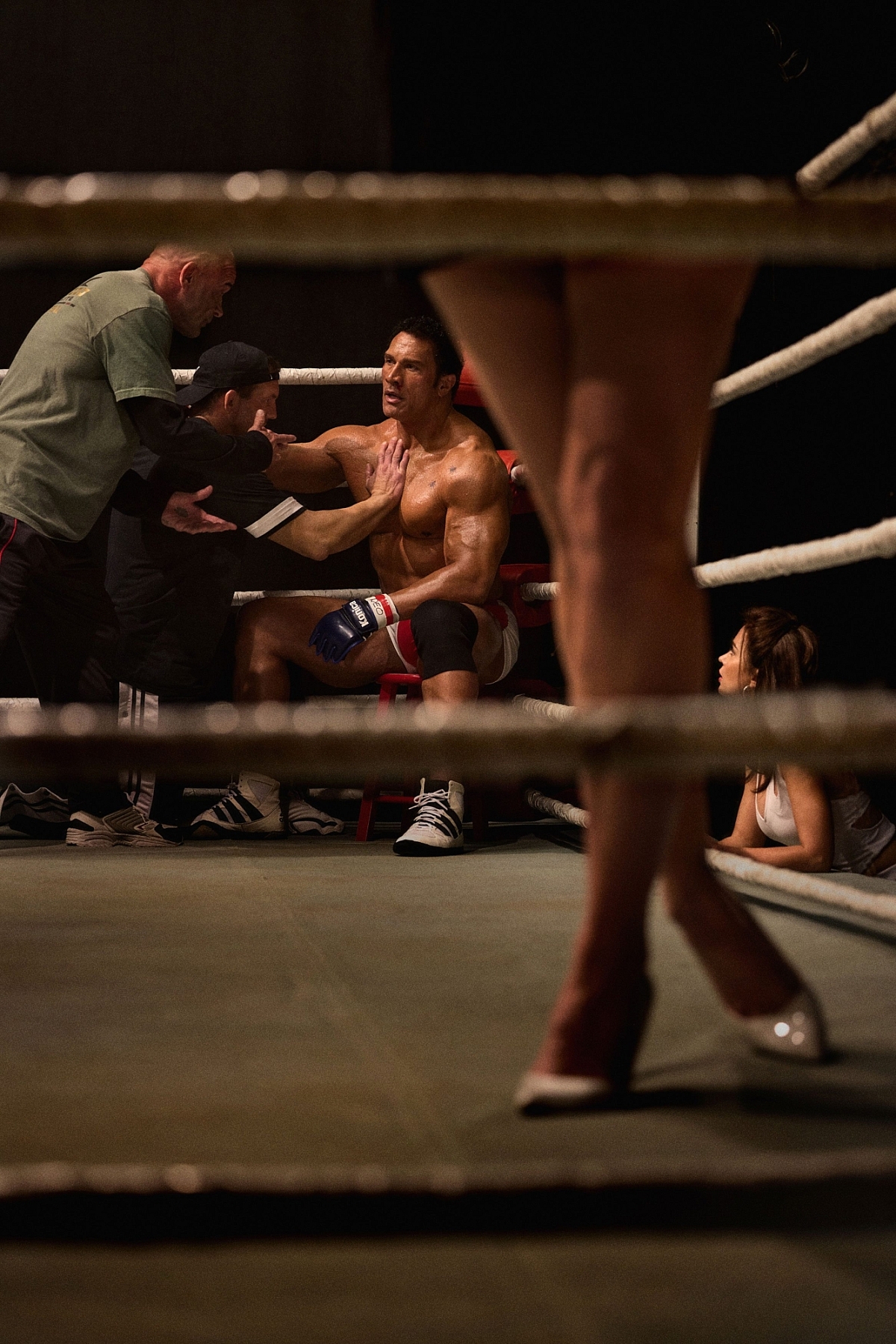
Dwayne Johnson as mixed martial arts and UFC fighter Mark Kerr in director Benny Safdie's THE SMASHING MACHINE. Photo courtesy of Cheryl Dunn and A24.
"I was really pushing that film around to see what it could do," Bishop says, "because I hadn't shot a lot of 16mm before. I experimented, pushing it two stops, pulling it two stops, really seeing where it would break, where you would go with it. In the end, I didn't push much at all because that stock looked best for our purposes at exposure; that gave us beautiful results."
The director and cinematographer further describe their visual strategy as having a second-tier pass to the fights. It made them fight a little harder to get a position to see the action. This is where documentary reference came in handy, not only HBO's The Smashing Machine, but also Sherman's March (1986), Ross McElwee's romantic journey of self-reflection throughout the South, tracing General William T. Sherman's Civil War scorched-earth march through the Confederacy, and The War Room (1993), D.A. Pennebraker and Chris Hegedus' intimate account of Bill Clinton's 1992 campaign for president.
"Sherman's March and War Room were very helpful because it was a different style than John Hyams' in [The Smashing Machine]," Safdie explains. "It was a very beautiful way of photographing on 16mm and the way that the camera allows you to get into different places. And it really puts you in the view of looking down, and you actually understand where the camera is. But then also we used a lot of long lenses. At one point, I think it was a 1200-millimeter lens, and I would call them long lens wide shots because I'd be on the opposite side and it would be a full shot of the body.
"I found it very freeing to be on the outside of the ring because it also allowed me to do things that look more realistic than if you're in the ring," Safdie continues, "seeing these punches hit each other in the face. Because now that you're rooted in a specific point of view, you don't see all the punches, you only see one or two. And then you hear the others. And I remember watching the fights with the sound off and realizing that there was a movement to the cameras that really added something. I'm seeing everything for the first time. So that's the vibe I wanted to have that when you're seeing these fights, you're really only seeing it once."
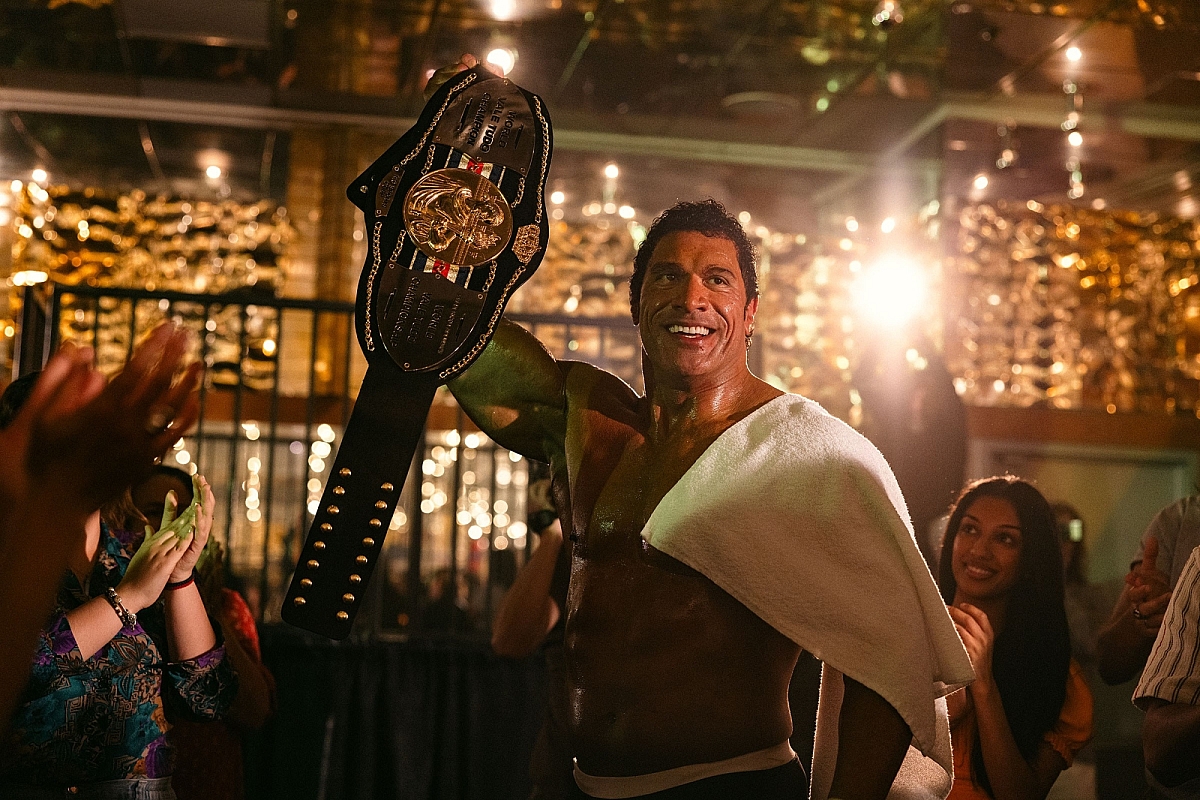
Dwayne Johnson as mixed martial arts and UFC fighter Mark Kerr in director Benny Safdie's THE SMASHING MACHINE. Photo courtesy of Eric Zachanowich and A24.
"I think there was a fluidity that we needed to retain in our filming," Bishop adds, "an openness to make it feel alive. We needed to be on guard for anything that felt too easy to shoot, too convenient. In this world, there's a lot of violence, and you see that it's completely normal for the people in it. So the wins and losses that happened, the fights in the ring and at home, we shot the same, as outsiders."
But the biggest confrontation occurs at the end between Mark and Dawn, and their Phoenix house becomes the metaphorical wrestling ring (with Bruce Springsteen's "Jungleland" playing in the background). It was filmed in five sections, similar to the wrestling fights, each serving as digestible amounts of physical exertion for Johnson and Blunt.
"I thought, wouldn't it be cool if you did that with an emotional fight?" Safdie says. "It also made sense because you don't know where these kinds of arguments are going to go. So I thought it was an interesting way of breaking it up into these moments, and when you get to the end, you don't even know where you started because you're emotionally in a different place."
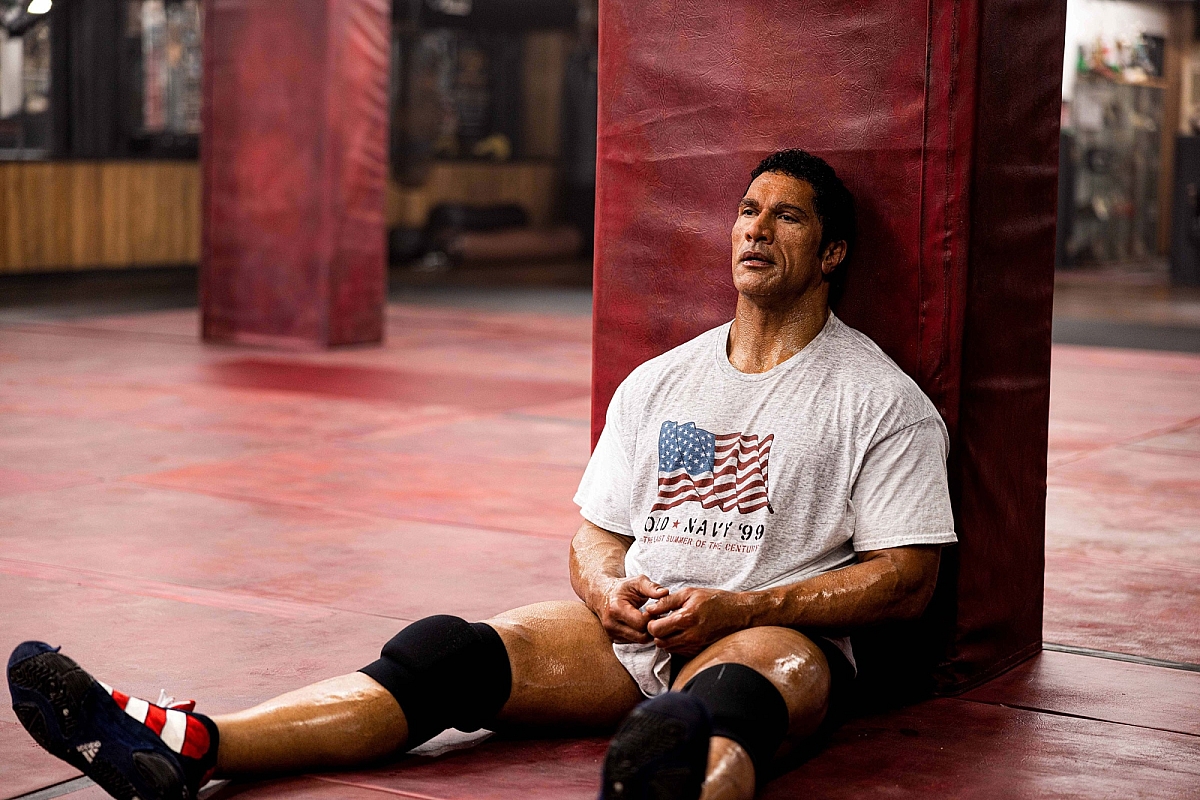
Dwayne Johnson as mixed martial arts and UFC fighter Mark Kerr in director Benny Safdie's THE SMASHING MACHINE. Photo courtesy of Eric Zachanowich and A24.
"I have always thought about their relationship as the real fight because the others are competitions," Bishop adds. "And to give the actors the freedom to move in that space to do what the characters needed to do was essential for all of us."
They specifically built the house to hide the cameras and lighting for dynamic 360-degree action "We could get far enough away so that we can see DJ's face and Emily's face in a two-camera setup. But they won't see us," Safdie continues. "The only time they really communicate is when they're fighting. It's a messed up dynamic."
Although Safdie originally intended to shoot the last part of the fight in the bedroom the following day, he decided to shoot it all at once to preserve the energy. "And it was one time for that final thing," adds Safdie. "They did it and it was done. And I said, 'We don't need to do it again.' And we spent the rest of the day, about an hour and a half, sitting there talking, and crying. It was intense."